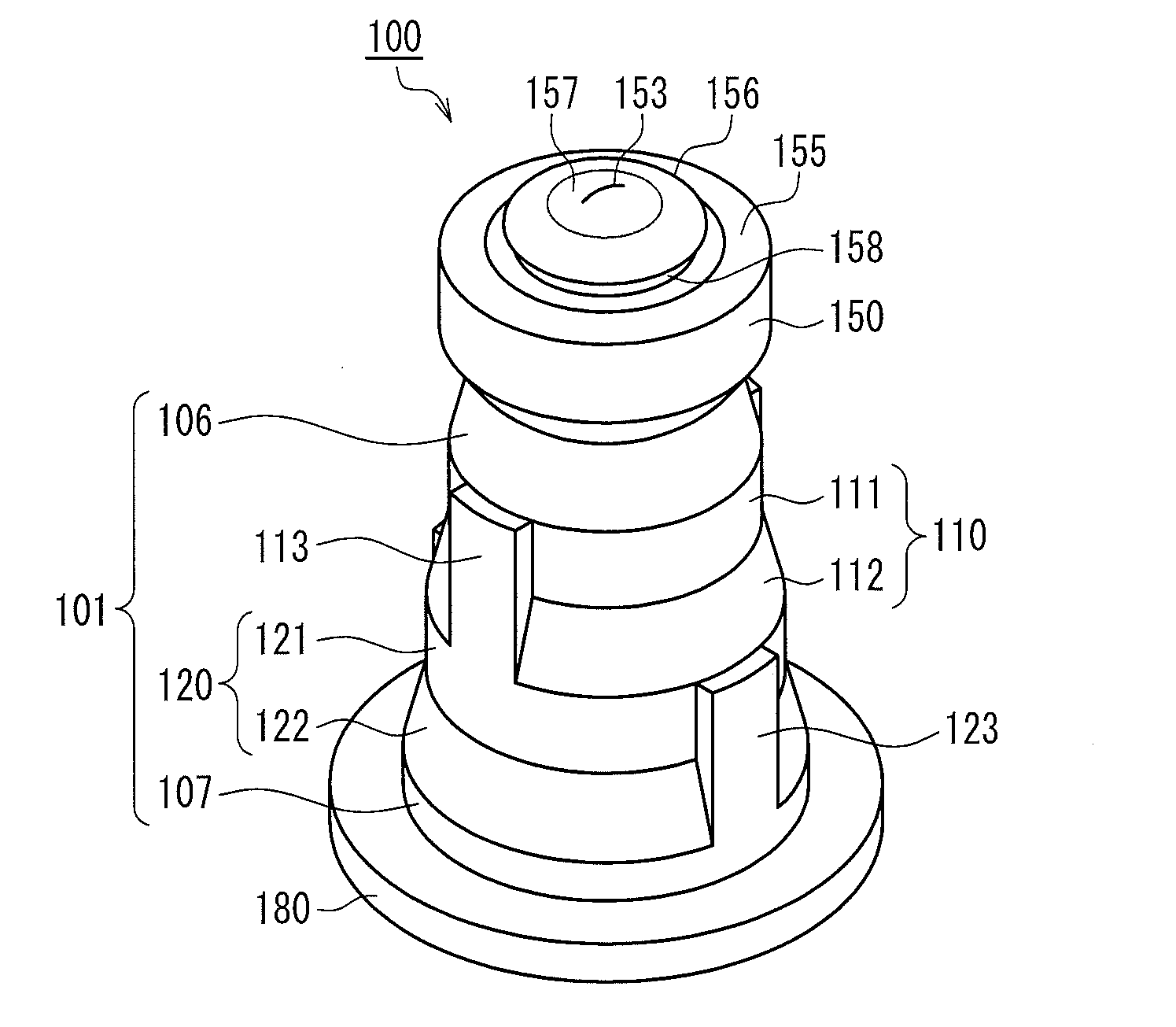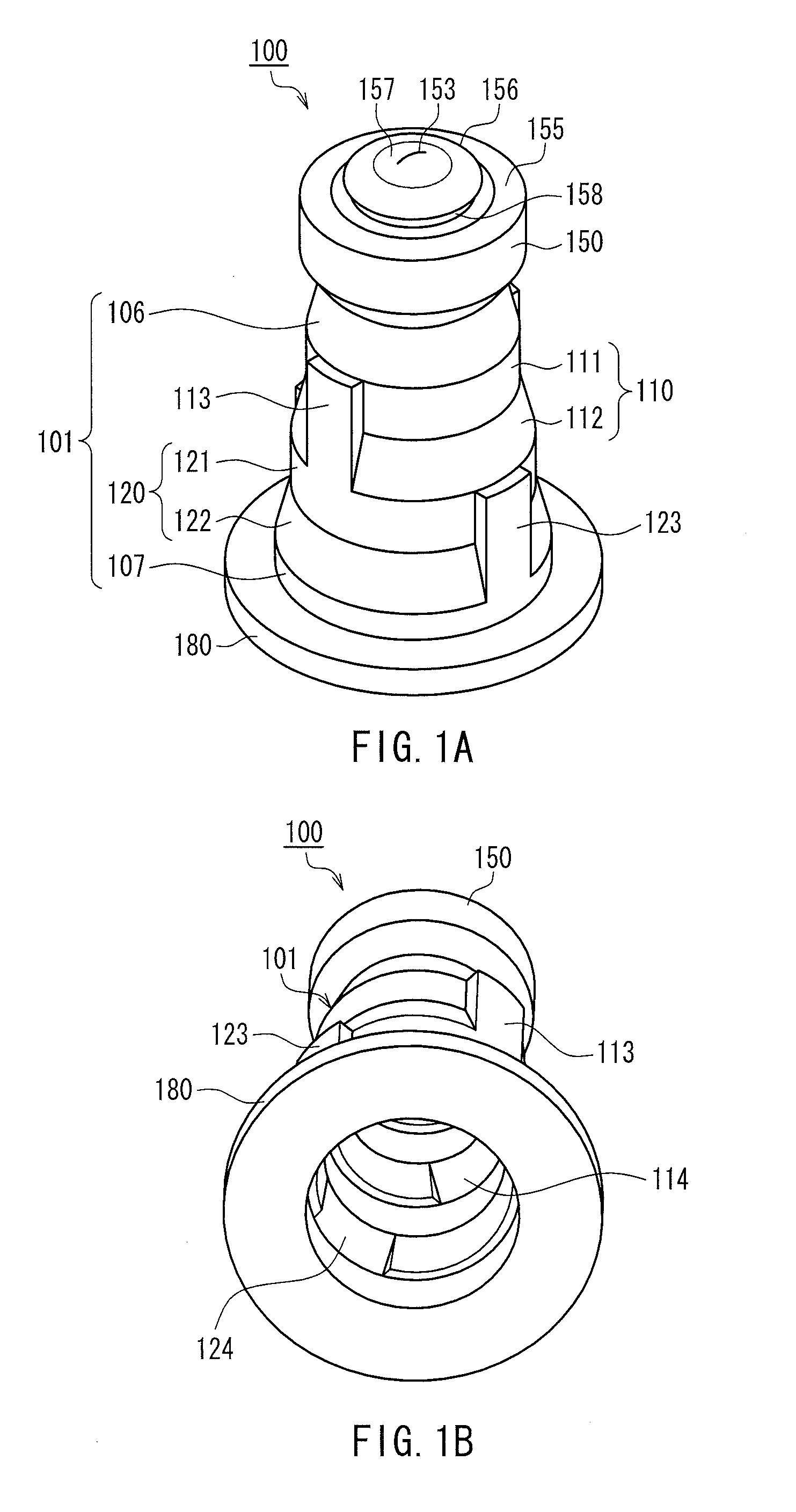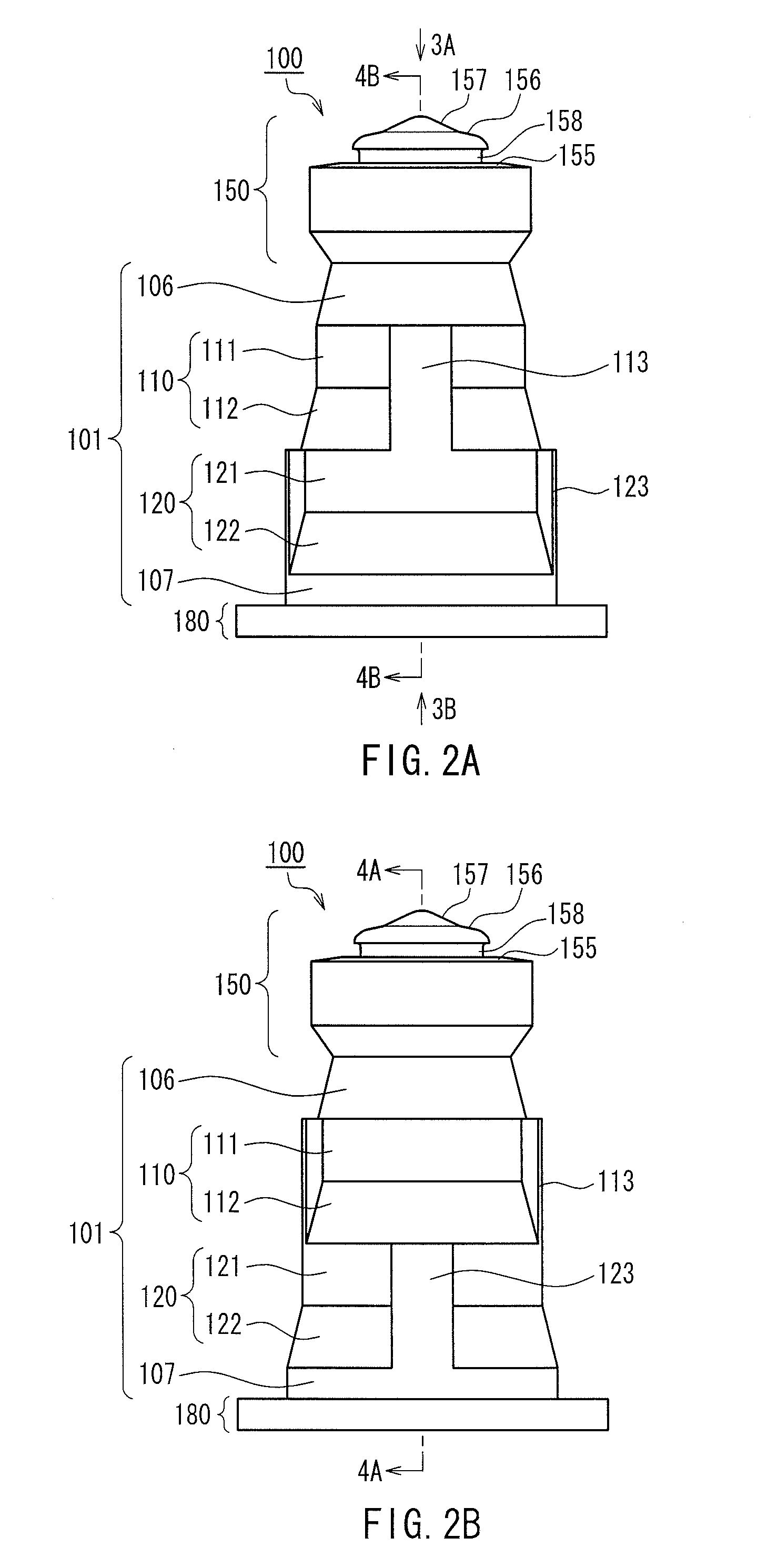Cover for male member
a cover and male technology, applied in the field of male members, can solve problems such as liquid leaking out of male luer's body
- Summary
- Abstract
- Description
- Claims
- Application Information
AI Technical Summary
Benefits of technology
Problems solved by technology
Method used
Image
Examples
embodiment 1
[0053]FIG. 1A is a perspective view of a cover for a male member (hereinafter referred to as simply a “cover”) 100 according to Embodiment 1 of the present invention as seen from above, and FIG. 1B is a perspective view of the cover 100 as seen from below. FIG. 2A is a front view of the cover 100, FIG. 2B is a side view of the cover 100, FIG. 3A is a plan view of the cover 100 as seen from an arrow 3A direction in FIG. 2A, and FIG. 3B is a bottom view of the cover 100 as seen from an arrow 3B direction in FIG. 2A. Furthermore, FIG. 4A is a cross-sectional view of the cover 100 taken along a plane including a line 4A-4A in FIG. 2B, and FIG. 4B is a cross-sectional view of the cover 100 taken along a plane including a line 4B-4B in FIG. 2A.
[0054]The cover 100 includes an outer circumferential wall 101 that has a substantially tubular shape, a head portion 150 provided at one end of the outer circumferential wall 101, and a ring-shaped base portion 180 provided at the other end of the ...
experiment 1
[0083]In Experiment 1, male luers 10 shown in FIG. 6 with the covers 100 and 500 attached were connected to the needleless port 950 (see FIG. 19). Aspects of the deformation of the covers 100 and 500 in the state before connection and the connected state were then observed by capturing cross-sectional images using X-ray CT.
[0084]FIGS. 8A and 8B are cross-sectional views showing the state before the male luer 10 having the cover 100 of Embodiment 1 attached thereto is connected to the needleless port 950. The cross-sections in FIGS. 8A and 8B are the same as the cross-sections in FIGS. 4A and 4B respectively.
[0085]FIGS. 9A and 9B are cross-sectional views showing the state where the male luer 10 having the cover 100 of Embodiment 1 attached thereto has been connected to the needleless port 950. The cross-sections in FIGS. 9A and 9B are the same as the cross-sections in FIGS. 8A and 8B respectively.
[0086]As shown in FIGS. 9A and 9B, the male luer 10 has passed through the slit 153 for...
experiment 2
[0096]Change in compressive load in the process of compressing the covers 100 and 500 used in Experiment 1 and then returning them (allowing them to extend) to their original state was measured.
[0097]FIG. 12 is a cross-sectional view for describing the method of Experiment 2 regarding the cover 100. Similarly to Experiment 1, the cover 100 was attached to a male luer 10. The base 15 of the male luer 10 was held such that the central axis 100a of the cover 100 was vertical. A compression block 50 provided with a hole 51 that can receive insertion of the male luer 10 was attached to an elevating apparatus (not shown) above the cover 100. As shown in FIG. 12, the position at which the edge of the opening of the hole 51 comes into contact with the head portion 150 of the cover 100 was set as the initial position of the compression block 50. The compression block 50 then was lowered from the initial position and thereafter raised to the initial position. The repulsive force applied to th...
PUM
 Login to View More
Login to View More Abstract
Description
Claims
Application Information
 Login to View More
Login to View More - R&D
- Intellectual Property
- Life Sciences
- Materials
- Tech Scout
- Unparalleled Data Quality
- Higher Quality Content
- 60% Fewer Hallucinations
Browse by: Latest US Patents, China's latest patents, Technical Efficacy Thesaurus, Application Domain, Technology Topic, Popular Technical Reports.
© 2025 PatSnap. All rights reserved.Legal|Privacy policy|Modern Slavery Act Transparency Statement|Sitemap|About US| Contact US: help@patsnap.com



